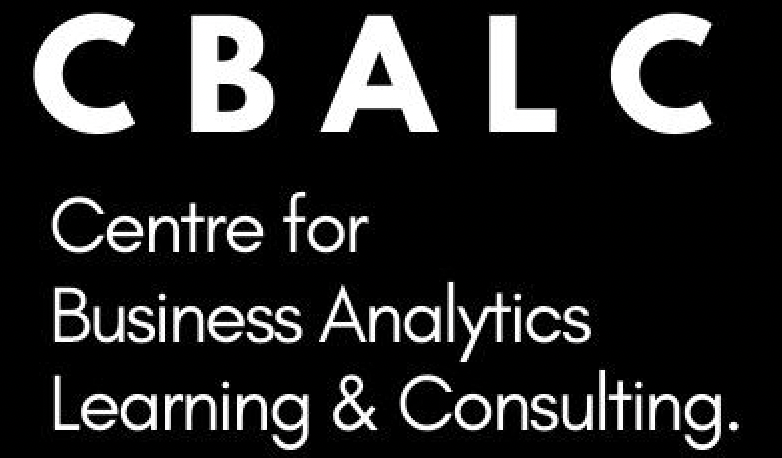Table of Contents:
- Introduction
- Defining Employee Performance Analytics
- The Evolution of Employee Performance Management
- The Importance of Employee Performance Analytics
- Enhancing Productivity and Efficiency
- Driving Informed Decision-Making
- Fostering Employee Growth and Development
- Key Metrics in Employee Performance Analytics
- Productivity Metrics
- Quality of Work Metrics
- Time Management Metrics
- Collaboration Metrics
- Implementing Employee Performance Analytics Successfully
- Choosing the Right Analytics Tools
- Ensuring Data Privacy and Security
- Gaining Employee Buy-In
- Providing Training and Support
- Real-Life Case Studies: Success Stories with Employee Performance Analytics
- Increased Productivity at Company X
- Improved Employee Satisfaction at Company Y
- Enhanced Decision-Making at Company Z
- Common Challenges in Implementing Employee Performance Analytics
- Resistance to Change
- Data Quality Issues
- Ensuring Fairness and Transparency
- Future Trends in Employee Performance Analytics
- Predictive Analytics for Talent Management
- Integration with Employee Well-being Initiatives
- Artificial Intelligence and Machine Learning in Performance Evaluation
- Conclusion
- The Transformative Power of Employee Performance Analytics
- The Path Forward: Embracing Analytics for Organizational Growth
Introduction:
In the ever-evolving landscape of human resources, Employee Performance Analytics has emerged as a transformative tool for organizations striving to enhance productivity, make informed decisions, and foster employee development. This blog explores the significance of Employee Performance Analytics, delving into key metrics, implementation strategies, real-life case studies, challenges, and future trends.
The Importance of Employee Performance Analytics:
Enhancing Productivity and Efficiency:
Employee Performance Analytics goes beyond traditional performance evaluations, providing a data-driven approach to measuring and improving productivity. By analyzing key metrics, organizations gain insights into employee workflows, identify bottlenecks, and streamline processes for optimal efficiency.
Driving Informed Decision-Making:
Informed decision-making is the bedrock of organizational success. Employee Performance Analytics empowers leaders with actionable insights, enabling them to make data-driven decisions related to workforce management, resource allocation, and strategic planning.
Fostering Employee Growth and Development:
Performance analytics isn’t just about evaluating past performance; it’s a tool for shaping the future. By identifying strengths and areas for improvement, organizations can tailor training and development programs to nurture employee skills and career growth.
Key Metrics in Employee Performance Analytics:
Productivity Metrics:
Productivity metrics measure the output of individual employees or teams. This includes the number of tasks completed, projects delivered, or sales generated. Analyzing productivity metrics provides a clear picture of who the top performers are and where improvements can be made.
Quality of Work Metrics:
Quality of work metrics assess the accuracy and effectiveness of an employee’s output. This includes factors such as error rates, customer satisfaction scores, and the successful completion of projects. Quality metrics are crucial for ensuring that high productivity aligns with high-quality outcomes.
Time Management Metrics:
Time management metrics evaluate how employees allocate their time across tasks. This includes analyzing time spent on different projects, meeting attendance, and adherence to deadlines. Effective time management is key to maintaining a balanced and efficient workflow.
Collaboration Metrics:
Collaboration metrics measure how well employees work together. This includes factors such as communication frequency, teamwork, and the successful completion of collaborative projects. Analyzing collaboration metrics is essential for fostering a positive and cooperative work environment.
Implementing Employee Performance Analytics Successfully:
Choosing the Right Analytics Tools:
Selecting the right analytics tools is crucial for the success of any Employee Performance Analytics initiative. Organizations must invest in tools that align with their specific needs, offer user-friendly interfaces, and provide robust data visualization capabilities.
Ensuring Data Privacy and Security:
As organizations delve into performance analytics, safeguarding employee data becomes paramount. Strict adherence to data privacy regulations and the implementation of robust security measures are essential for building trust and maintaining compliance.
Gaining Employee Buy-In:
The success of Employee Performance Analytics hinges on the support and cooperation of employees. Organizations should communicate the benefits of analytics transparently, address concerns, and involve employees in the process to ensure buy-in and collaboration.
Providing Training and Support:
Introducing analytics tools requires an investment in training and ongoing support. Organizations should provide comprehensive training programs to ensure that employees can effectively use the analytics tools. Ongoing support is crucial for addressing any challenges or questions that may arise.
Real-Life Case Studies: Success Stories with Employee Performance Analytics
Increased Productivity at Company X:
Company X implemented Employee Performance Analytics to identify and reward high-performing teams. By focusing on productivity metrics, they were able to recognize and replicate the behaviors of their most efficient teams, leading to a significant increase in overall productivity.
Improved Employee Satisfaction at Company Y:
Company Y used Employee Performance Analytics to understand the factors influencing employee satisfaction. By analyzing collaboration metrics, they identified opportunities to enhance teamwork and communication, resulting in a notable improvement in employee satisfaction scores.
Enhanced Decision-Making at Company Z:
Company Z integrated Employee Performance Analytics into their strategic decision-making processes. By combining productivity, quality of work, and time management metrics, they gained insights that informed resource allocation and project prioritization, leading to more informed and successful business decisions.
Common Challenges in Implementing Employee Performance Analytics:
Resistance to Change:
Resistance to change is a common challenge when introducing Employee Performance Analytics. To overcome this, organizations should communicate the benefits clearly, address concerns proactively, and involve employees in the decision-making process.
Data Quality Issues:
The effectiveness of performance analytics relies on the accuracy of the underlying data. Organizations must invest in data quality initiatives to ensure that the information used for analysis is reliable and reflective of actual employee performance.
Ensuring Fairness and Transparency:
Maintaining fairness and transparency in the evaluation process is crucial. Organizations should establish clear criteria for performance assessment, communicate these criteria openly, and provide feedback to employees to ensure a transparent and equitable process.
Future Trends in Employee Performance Analytics:
Predictive Analytics for Talent Management:
The future of Employee Performance Analytics involves the integration of predictive analytics for talent management. By leveraging historical data and machine learning algorithms, organizations can anticipate future performance trends and proactively address potential challenges.
Integration with Employee Well-being Initiatives:
Employee well-being is an integral aspect of organizational success. Future trends in Employee Performance Analytics include the integration of data related to employee well-being, allowing organizations to make decisions that prioritize the holistic health and satisfaction of their workforce.
Artificial Intelligence and Machine Learning in Performance Evaluation:
The adoption of artificial intelligence (AI) and machine learning (ML) in Employee Performance Analytics is on the rise. These technologies can analyze complex datasets, identify patterns, and provide deeper insights into employee performance, leading to more accurate and nuanced evaluations.
Conclusion:
Employee Performance Analytics is not just a tool; it’s a catalyst for organizational success. By harnessing the power of data, organizations can enhance productivity, drive informed decision-making, and foster the growth and development of their most valuable asset—their employees. As we look to the future, the integration of predictive analytics, a focus on employee well-being, and advancements in AI and ML will further amplify the transformative impact of Employee Performance Analytics.
Frequently Asked Questions (FAQs):
Q1: What is Employee Performance Analytics, and why is it important? A1: Employee Performance Analytics involves using data to assess and improve employee productivity, efficiency, and overall performance. It’s crucial for organizations seeking data-driven insights to enhance decision-making and foster employee growth.
Q2: What are some key metrics in Employee Performance Analytics? A2: Key metrics include productivity metrics, quality of work metrics, time management metrics, and collaboration metrics. These metrics provide a comprehensive view of an employee’s contributions and areas for improvement.
Q3: How can organizations successfully implement Employee Performance Analytics? A3: Successful implementation involves choosing the right analytics tools, ensuring data privacy, gaining employee buy-in, and providing adequate training and support. These steps are essential for a seamless integration of analytics into organizational processes.
Q4: Can you provide real-life examples of organizations benefiting from Employee Performance Analytics? A4: Certainly! Case studies include increased productivity at Company X, improved employee satisfaction at Company Y, and enhanced decision-making at Company Z. These examples showcase the tangible benefits of leveraging performance analytics.
Q5: What challenges might organizations face in implementing Employee Performance Analytics? A5: Common challenges include resistance to change, data quality issues, and the need to ensure fairness and transparency in performance evaluations. Overcoming these challenges is crucial for the successful adoption of performance analytics.
Q6: What are the future trends in Employee Performance Analytics? A6: Future trends include the integration of predictive analytics for talent management, combining performance analytics with employee well-being initiatives, and the increasing role of artificial intelligence and machine learning in performance evaluation.








